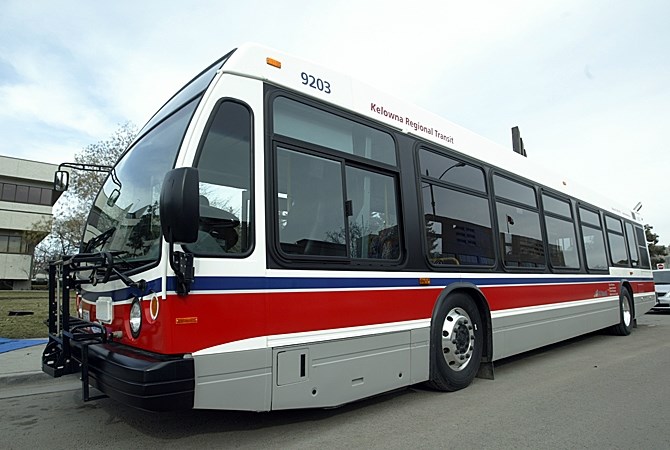Would busses in Kamloops, Kelowna be better if they were free?
A Victoria city councillor is lobbying to make transit free for all riders in that city.
Ben Isitt has already successfully achieved free transit ridership for all people under the age of 19 and a free system for low income seniors is in the city budget to be implemented later this year.
The next step is to get a referendum before Victoria voters in the upcoming municipal election on Oct. 15 to make transit free for everyone in Victoria.
His reasons for pushing for free transit is something that extends far beyond Victoria city limits.
“I think by eliminating fares we will substantially increase the constituency and, as a result, there’ll be more political pressure for a high-quality transit system including more frequent buses and better routes,” Isitt told iNFOnews.ca. “(The goal is) to remove barriers to mobility for low income people and to remove barriers to people getting around in a low carbon, climate-friendly way. Both those objectives, the central justice one and the environmental one, are essential.”
Like Kelowna and Kamloops, Victoria has a regional transit system. So far, Isitt has only succeeded in getting Victoria city council to support free fares for some riders.
A regional transit commission turned down free fares for younger riders twice, both by tie votes.
Transit in B.C. is funded mostly by the province (48.3% in 2018/19 according to B.C. Transit reports). Local governments contributed 22.9% and fares from riders made up 28.7% of funding.
In Victoria, the city is paying $1 million a year to make ridership free for those under 19, Isitt said. To make the whole system free will cost about $10 million since Victoria residents make up about 25% of the riders. That system costs about $40 million a year to operate.
The Central Okanagan system cost $25.3 million in 2018/19 with $7 million coming from fares.
The Kamloops system, during that same time period, cost $15.9 million with riders paying $4.3 million in fares.
Isitt is canvassing his fellow city councillors to see if they support a referendum this fall so Victoria tax dollars can be used to eliminate all fares. He knows he’s got a tight timeline if that’s going to happen by Oct. 15.
His council, on a number of occasions, has supported him in calling on the province to assist in implementing such a system.
But it’s a long hill to climb with the regional partners not yet on board.
It also will require a change in thinking from Ministry of Highways and Infrastructure staff.
“Some of the bureaucrats are dinosaurs,” Isitt said. “When I look at how that budget is allocated and the overwhelming favouring of auto-mobility and the chronic underfunding of transit and passenger rail and other modes, I think there’s a big need for renewal in the bureaucracy of that transportation ministry. I think that’s been an impediment.”
He pointed to the $95 million spent in recent years on the McKenzie Interchange, $60-$70 million on the Keating Cross overpass and the $100 million cost of widening the highway to Sooke as examples of the government’s focus on roads rather than transit.
“I personally do favour diverting funds from road building to mass low carbon transit, to electrifying and improving and removing financial barriers to transit,” Isitt said.
On the other hand, he's realistic enough to know that roads are still vitally important, including for transit users and cyclists.
“Whether the province wants to expand the overall pie and allocate more funds overall to transit or whether they want to shift funds from road building, that’s a choice for the province," he said. "But I think it’s imperative that we do see a substantially greater investment in transit.”
Isitt has been a Victoria city councillor since 2011. He’s an historian and legal scholar and has taught history, international relations and labour studies at the University of Victoria
A Central Okanagan Regional Transportation Plan, adopted in December 2020, focuses on increasing transit through that region as opposed to, for example, a second crossing of Okanagan Lake.
READ MORE: Transit, not a second crossing, is the solution for Central Okanagan's bridge, highways: planners
As in Victoria, there’s a chicken and egg conundrum. More people won’t ride transit until the system is improved so buses run more frequently and efficiently but there seems to be no appetite from government to improve the system to help make that happen.
To contact a reporter for this story, email Rob Munro or call 250-808-0143 or email the editor. You can also submit photos, videos or news tips to the newsroom and be entered to win a monthly prize draw.
We welcome your comments and opinions on our stories but play nice. We won't censor or delete comments unless they contain off-topic statements or links, unnecessary vulgarity, false facts, spam or obviously fake profiles. If you have any concerns about what you see in comments, email the editor in the link above.




